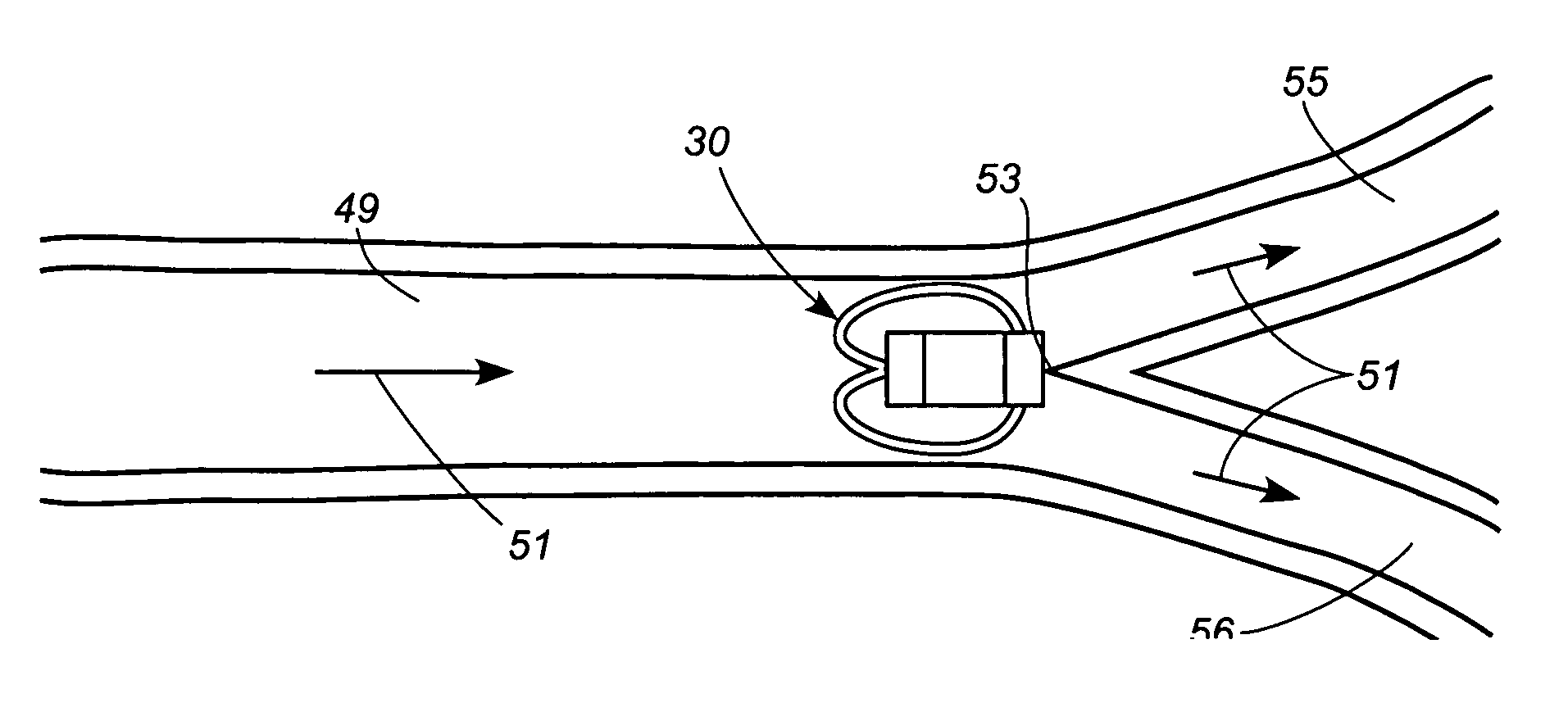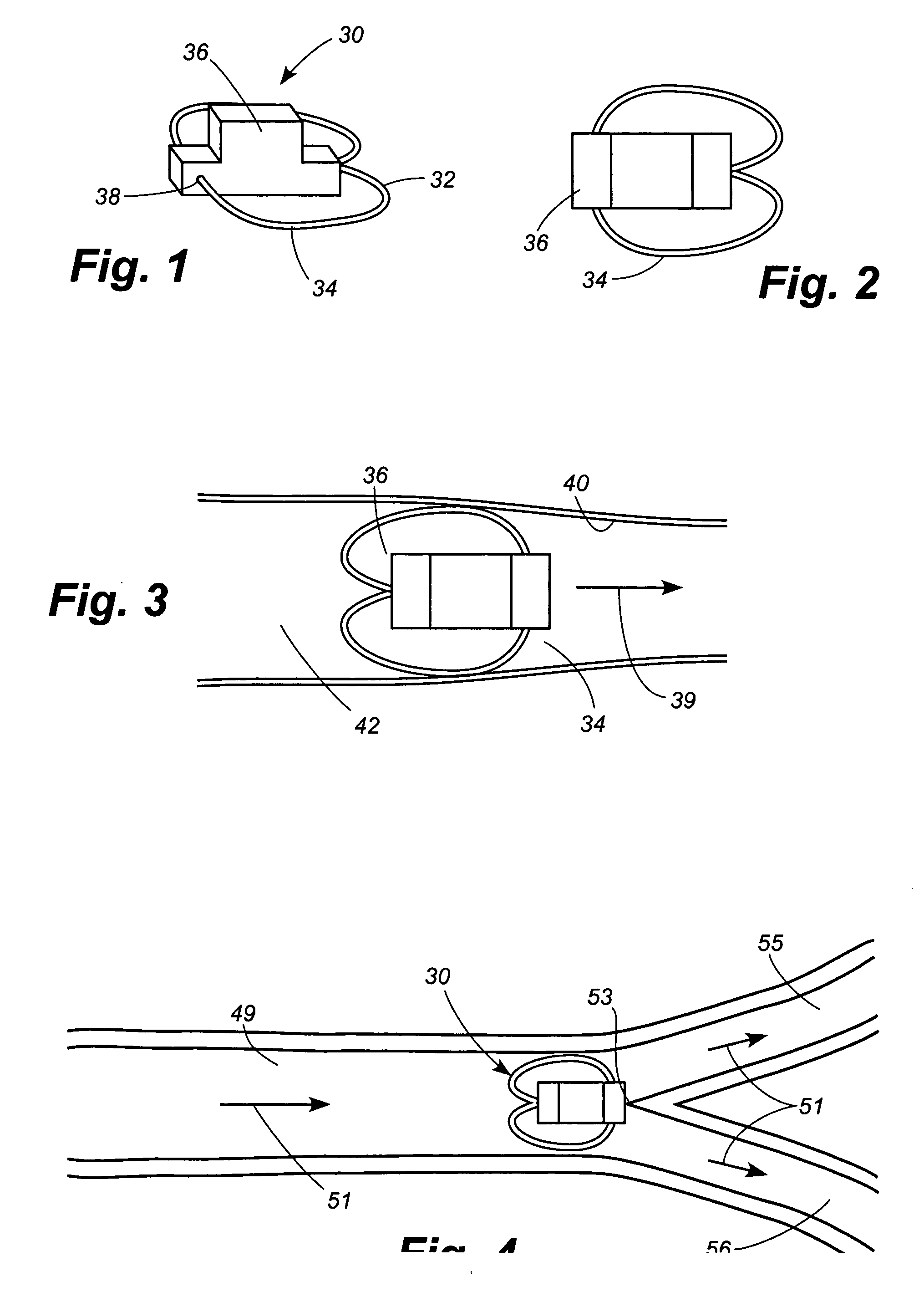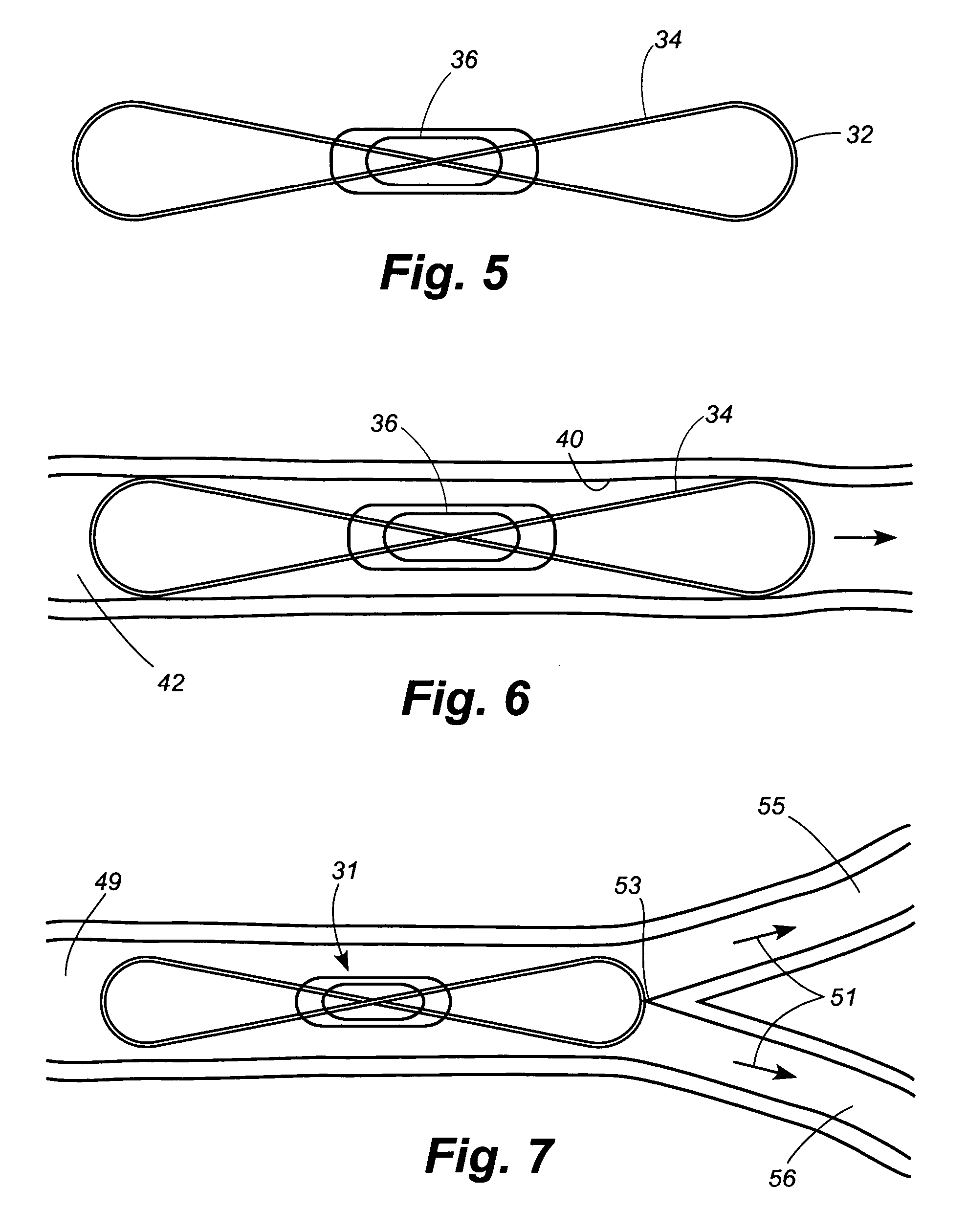Apparatus and method for sensor deployment and fixation
a technology for fixing devices and sensors, applied in medical science, diagnostics, angiography, etc., can solve problems such as difficult environment in which to reliably secure sensors or other apparatuses, difficulty in detecting and detecting abnormalities, and difficulty in detecting abnormalities,
- Summary
- Abstract
- Description
- Claims
- Application Information
AI Technical Summary
Benefits of technology
Problems solved by technology
Method used
Image
Examples
Embodiment Construction
[0046] An implant assembly of this invention includes an intracorporeal device and an anchoring structure used to stabilize the intracorporeal device in the body, such as in a vessel. Delivery systems of this invention are used to deploy and secure the implant assembly in a desired location in a vessel and include a delivery apparatus and an implant assembly. The intracorporeal device may be a pressure sensor, further described below. The anchoring structure may be a structure capable of being introduced into the body via a delivery apparatus, such as a catheter, and then lodging within the vessel. Anchoring structures of this invention may include structure including opposed wire loops, radial wire array structures, and daisy petal structures, all further described below.
[0047] All of the implant assemblies of this invention obstruct approximately 50% or less of the cross-sectional area of the vessel in which it resides. Preferably, the implant assemblies obstruct 20% or less of t...
PUM
 Login to View More
Login to View More Abstract
Description
Claims
Application Information
 Login to View More
Login to View More - R&D
- Intellectual Property
- Life Sciences
- Materials
- Tech Scout
- Unparalleled Data Quality
- Higher Quality Content
- 60% Fewer Hallucinations
Browse by: Latest US Patents, China's latest patents, Technical Efficacy Thesaurus, Application Domain, Technology Topic, Popular Technical Reports.
© 2025 PatSnap. All rights reserved.Legal|Privacy policy|Modern Slavery Act Transparency Statement|Sitemap|About US| Contact US: help@patsnap.com



